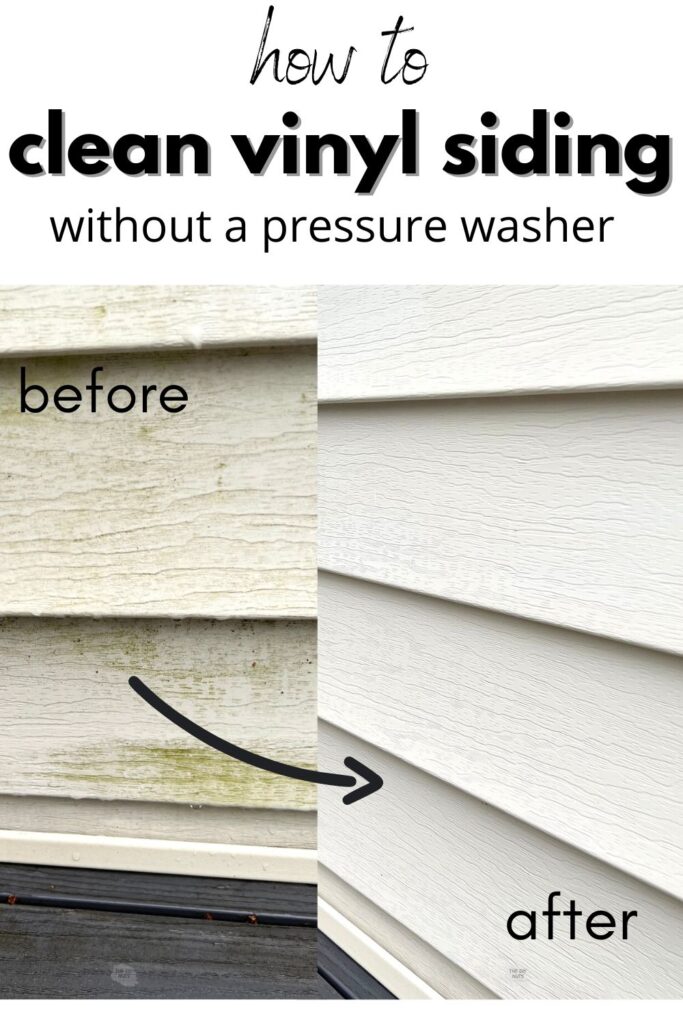Best Homemade Vinyl Siding Cleaner (Eco-Friendly)
Are you looking for a simple and eco-friendly way to clean vinyl siding? Learn how to make your own cleaner and save money using supplies you probably already have at home.
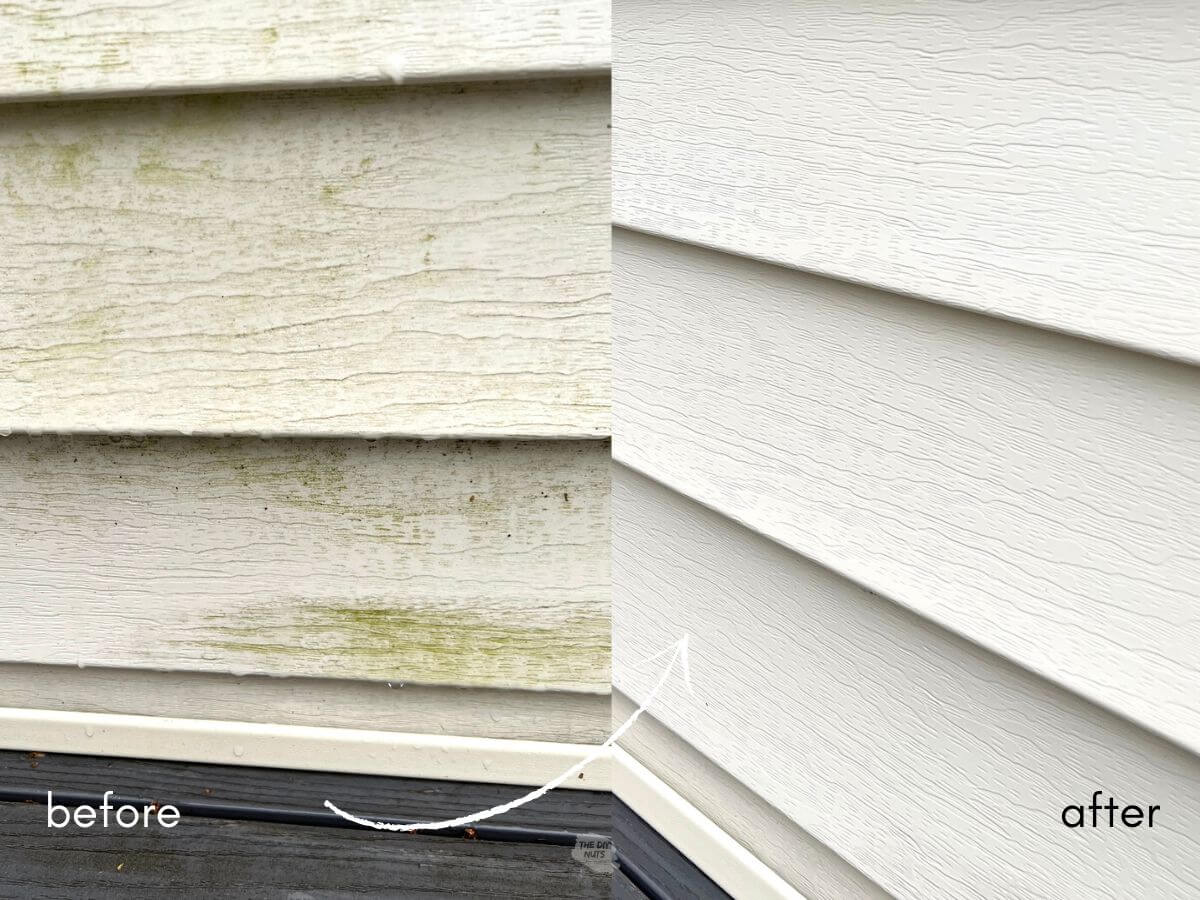
*Disclosure: I only recommend products I would use myself and all opinions expressed here are our own. This post may contain affiliate links that at no additional cost to you, I may earn a small commission. Read our full privacy policy.
Do you have an outdoor space you love? Have you ever wondered how to easily clean your home’s exterior? We have been working on our outdoor space and yard. Here is the best way to make your old siding feel new again with homemade vinyl siding cleaner.
Why Clean Your Vinyl Siding?
First, no one likes to look at dirty siding with mildew stains. If you are like us then certain spots of our vinyl siding get greenish algae spots and other mildew build-ups. Some of you might even have a bigger mold problem on your siding. Sometimes homemade cleaning solutions work better than expected and that was the case here!

Try this cleaning method first on stubborn stains before going and buying expensive siding cleaners that aren’t as eco-friendly.
Is it mildew, algae or mold?

Our vinyl siding definitely had some algae and mildew. You can tell from the greenish appearance that just spraying it off wasn’t going to work on some of the tough stains. We were pretty lucky that we didn’t have too much mold on our siding due to cleaning it regularly. This simple white vinegar and water mixture should work on light mold, algae, ordinary dirt and mildew.
Ways to Clean Vinyl Siding
- Pressure Wash
- Use store-bought cleaning products like Wet and Forget or Simple Green Cleaner
- Make simple homemade vinyl siding cleaner made with 30% white vinegar and 70% water in a spray bottle
- Homemade cleaner made with a gallon of water and 1 cup of oxygen bleach
Why not just power wash your siding?
Pressure washing can be tricky. You might not even realize you are damaging the surface or your siding because of not controlling the amount of pressure. Yes, power washing can be a great way to clean your outdoor space but this method is so simple that you might reconsider taking a chance with your power washer.
How often do you have to clean your siding?
Some people will say that you should clean your siding regularly every year. However, many factors, like your climate, may affect this. We have some spots on our siding that need to be cleaned every year because they are more in the shade.
This simple DIY household cleaner is a perfect way to spot clean vinyl siding that just needs to be freshened up. With just a little elbow grease your siding will look new. Don’t worry it really doesn’t take too much pressure and work.
Best Vinyl Siding Brush
One of the most important things when cleaning your vinyl siding by hand is to have the right brush. Look for a brush with soft enough bristles and a long handle. The one that works the best is meant for cleaning cars and has a hose attachment.
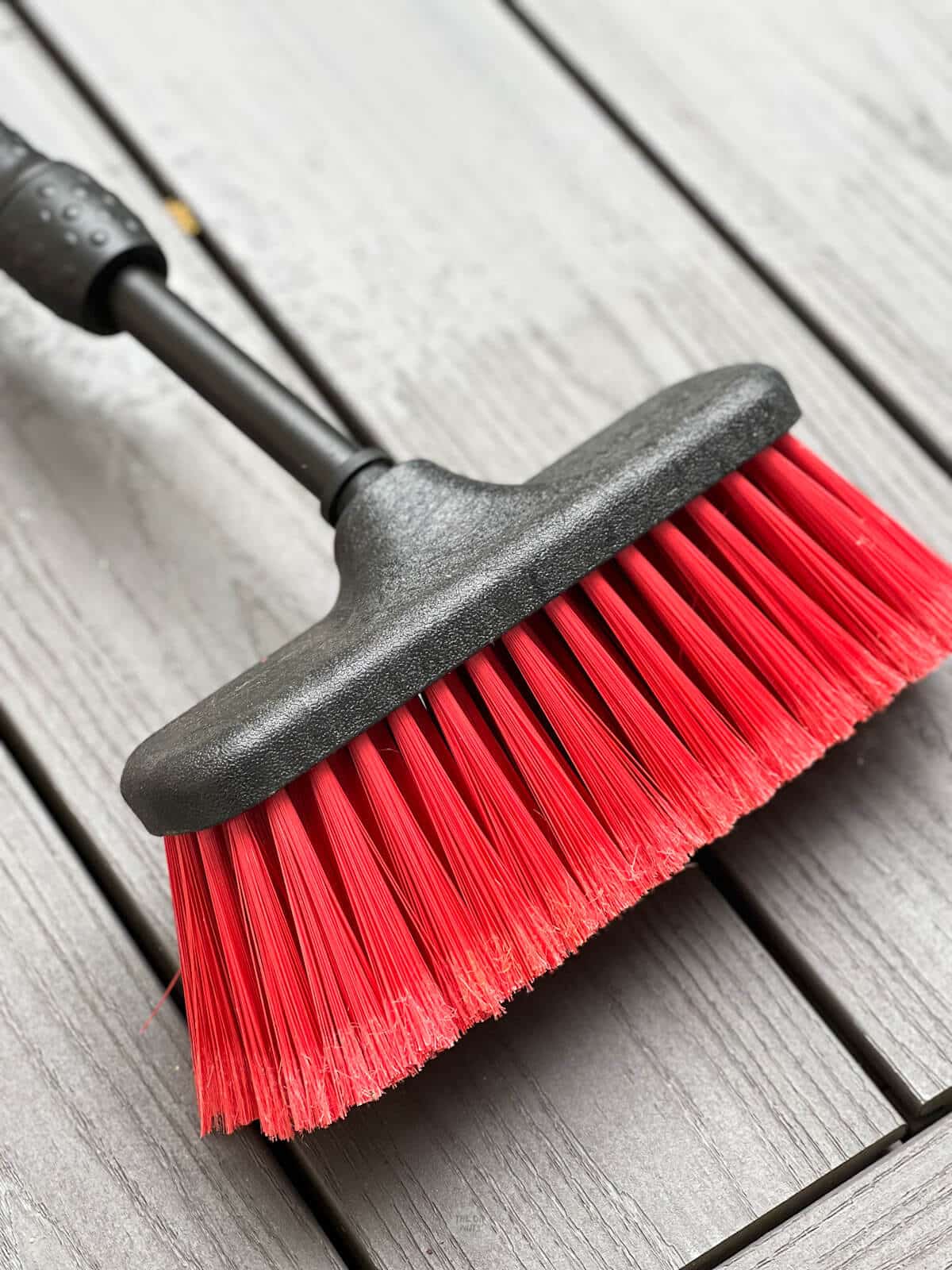
Try a soft brush first because you do not want to scrape your siding. We used the Libman 6.5 ft. Flow-Thru Wash Brush.
Similar Brushes To The Libman Flow-Thru
What should you do to prep vinyl siding?
Any time you use something new to clean, we recommend that you test it in a small area to ensure that the colors do not change.
Also, note that white vinegar is acidic, and you should take proper precautions, such as wearing protective gear such as gloves and eyewear. Make sure to also dilute it properly. Also, never mix vinegar with bleach.
Is white vinegar eco-friendly?
Vinegar is considered eco-friendly or green. According to GreenMatters, “white vinegar is 100 percent natural, biodegradable, vegan, hypoallergenic, and non-toxic.”
If you are looking for vinegar that is even more eco-friendly when produced stick to white vinegar made from grains or not made with petrochemicals. Sustainability Nook states, “petrochemicals contribute to environmental harm” so it is best to try to buy all-natural vinegar when you are trying to be eco-friendly.
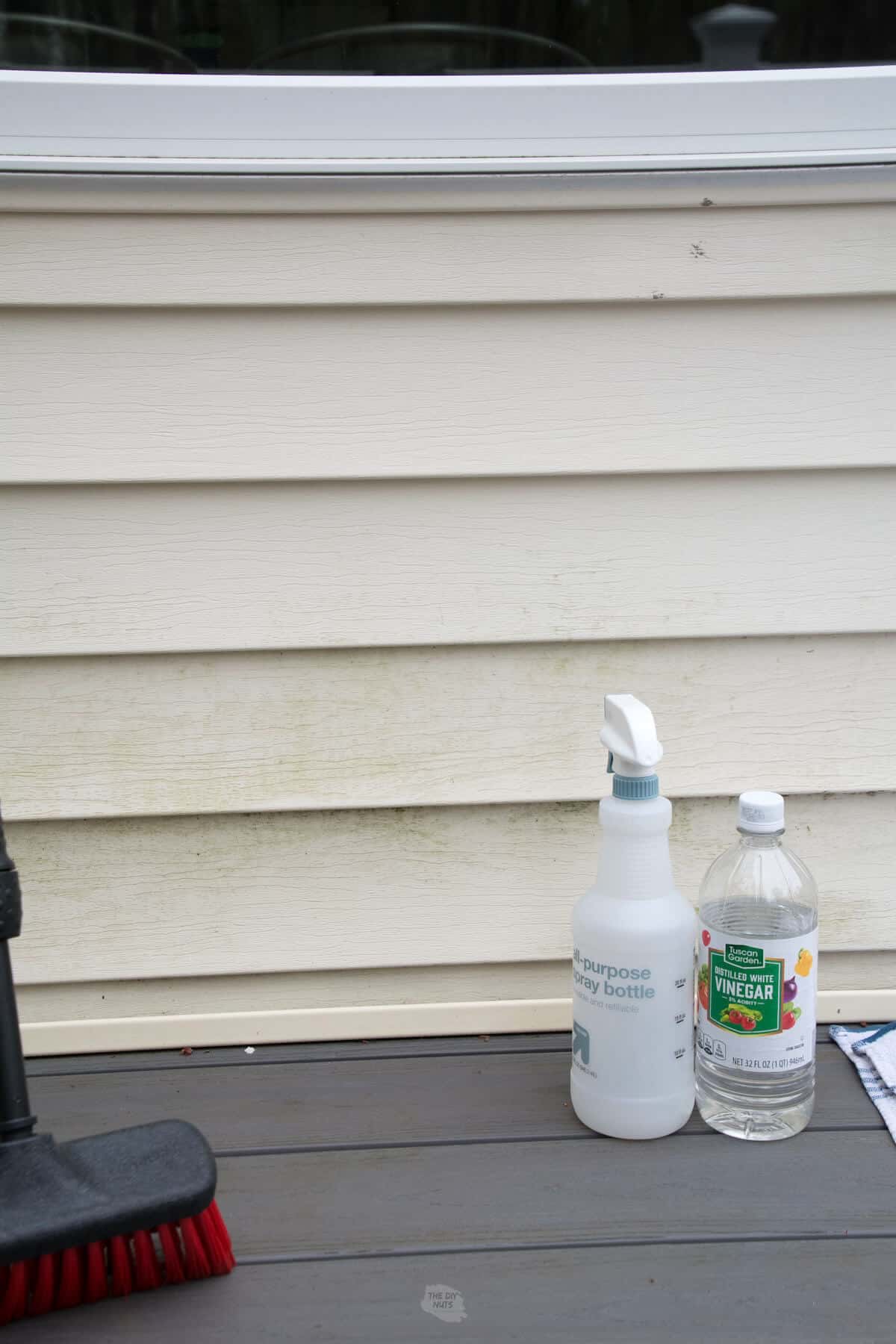
When diluted properly, a white vinegar solution is safe to use for cleaning. It might not kill all germs, so it should not always replace commercial chemical cleaners.
We did not know all this about white vinegar at the time. We plan on purchasing this all-natural vinegar for future use.
What To Avoid
Do not use harsh chemicals like nail polish remover or rough scrubbing materials like steel wool. You will damage the surface of your siding. Also, if you are using a pressure washer, make sure you are doing it correctly.
Recommended Supplies
- Empty Spray Bottle
- Garden Hose with Spray Nozzle
- Soft Bristle Brush
- White Vinegar (see above for suggestions for the best eco-friendly type)
- Water
- Optional: Soft Cloth
How To Clean Your Siding Naturally
Step 1: Make a general-purpose cleaner. Add 30% white vinegar to a spray bottle with 70% water. We marked our bottle before filling it with the proper amounts.
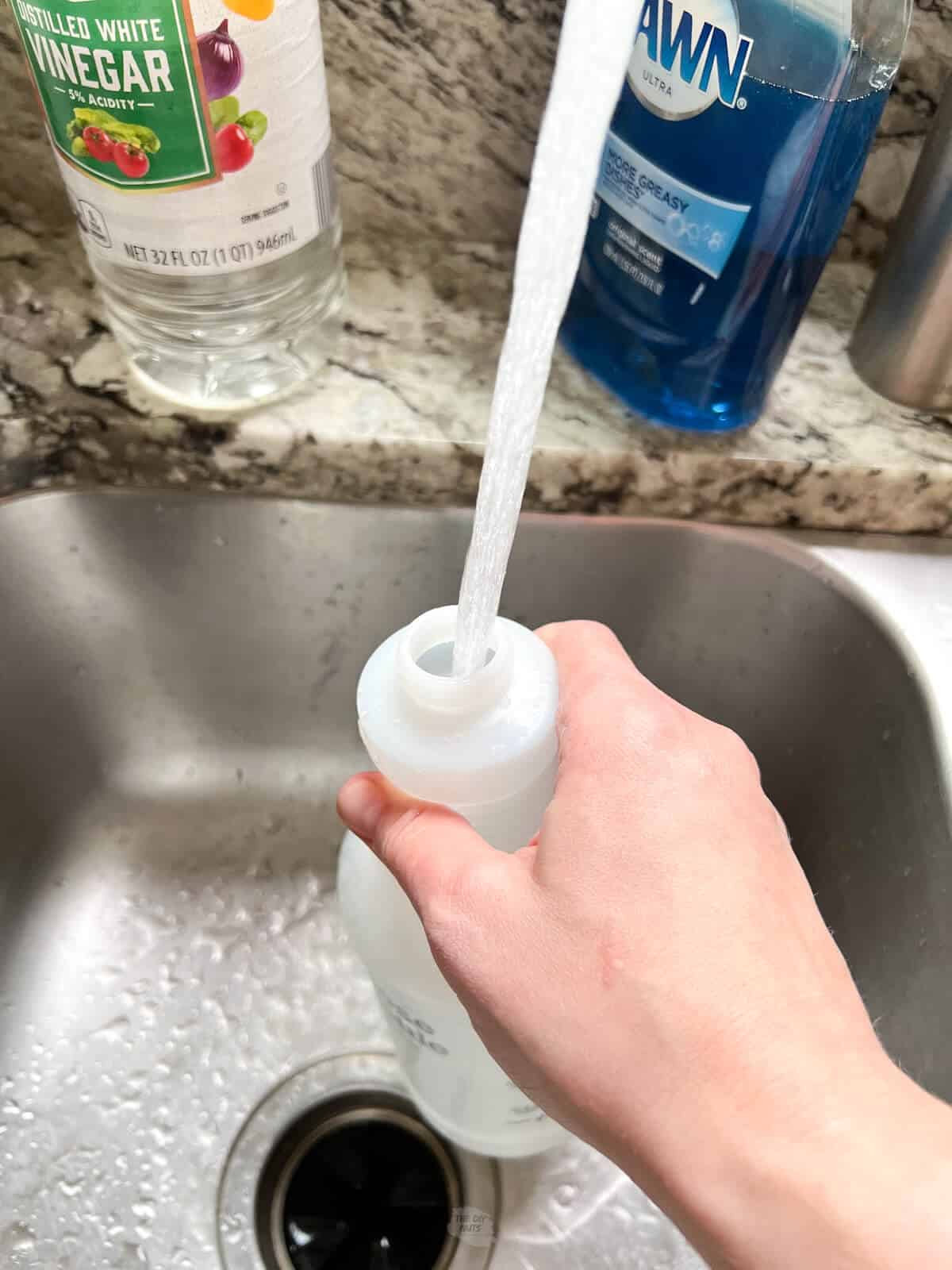
Step 2: Spray the mixture on the siding. Make sure you test a small area first.
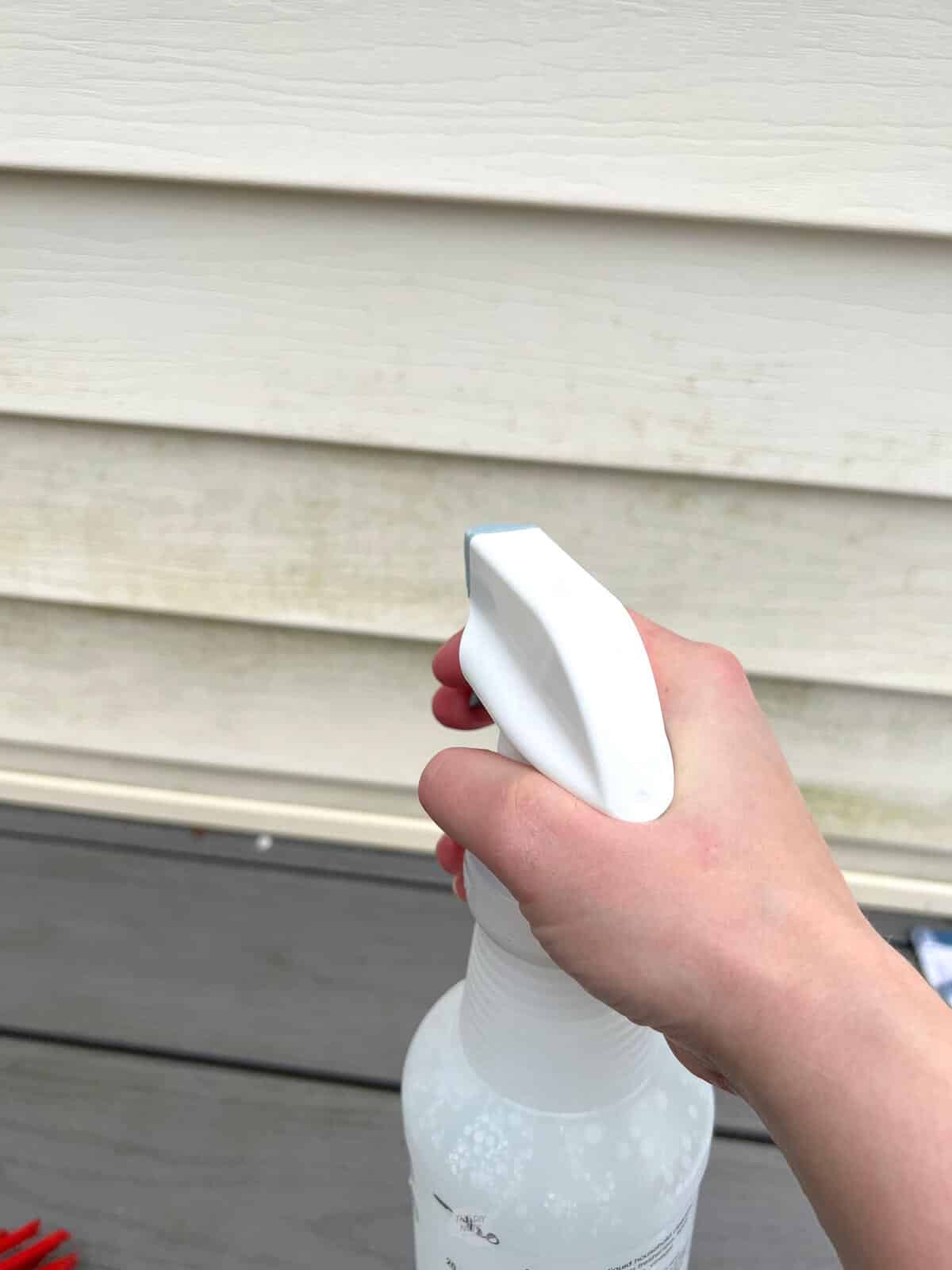
Step 3: Let spay sit for 5-10 minutes.

Step 4: Use a soft brush to lightly scrub your vinyl siding.
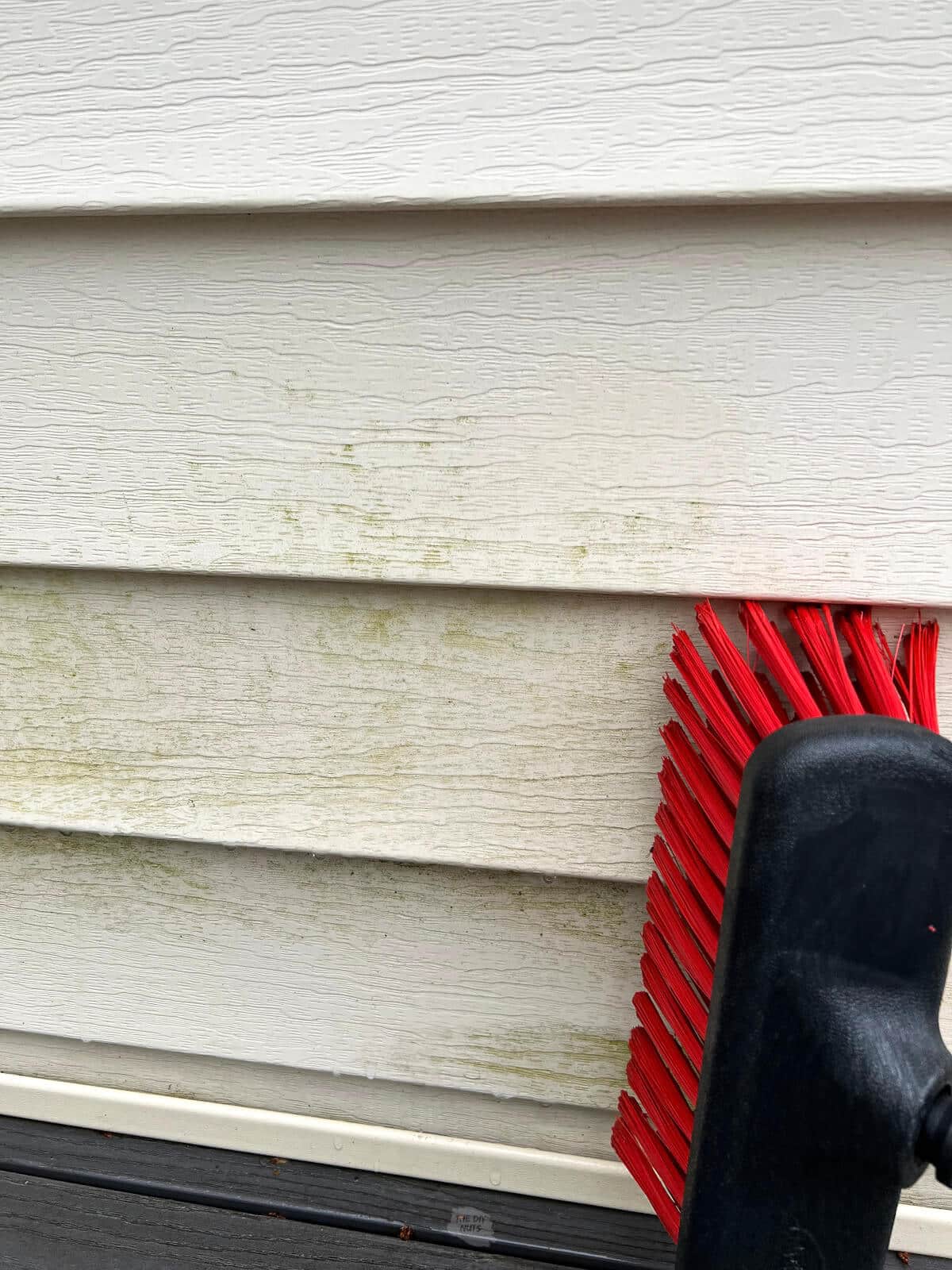
Step 5: Spray completely with a hose. If necessary, you could even wipe with a microfiber cloth in some hard-to-reach areas.

What about cleaning your deck?
Use the same brush and a little different eco-friendly deck cleaner to make your composite decking brand new looking again.
Follow us on Pinterest, Youtube or Facebook for more DIY inspiration!
We absolutely loved using this simple and effective homemade vinyl siding cleaner!
If you like this tutorial, please give it 5 stars below 🤩🤩🤩🤩🤩. Your support helps us continue to provide unique and budget-friendly DIYs.
How To Clean Vinyl Siding

Equipment
- Spray Bottle
- Hose
- Soft Bristle Brush awesome brush also used to clean deck
Supplies
- 30% White Vinegar
- 70% Water
Instructions
- Mix 30% white vinegar and 70% water in a spray bottle. We marked our bottle before filling it with the proper amounts.
- Spray the mixture on the siding. Make sure you test a small area first.
- Let spay sit for 5-10 minutes.
- Use a soft brush to lightly scrub your vinyl siding.
- Spray completely with a hose.
Video
Notes
- Wear protective eyewear and gloves.
- Make sure to test your mixture in a small area first.

